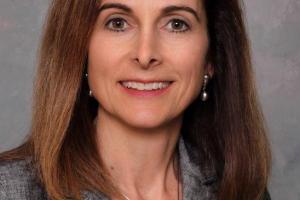
Description
Cardiac surgery seemed like the next big frontier to the late Nina Starr Braunwald, M.D., who would later become the first woman to become a cardiac surgeon.
She was excited to take on its challenges.
At 32, Braunwald also became one of many other firsts. She was the first woman to provide open-heart surgery and the first doctor to create an artificial mitral heart valve, which she used during the operation. Braunwald, who studied art as an undergraduate, also helped design the cardiopulmonary bypass machine used in the operation. The device helps patients breathe and circulate blood throughout their body by taking over for the heart and lungs.
The breakthrough moment for Braunwald, which occurred while she was training at the National Heart Institute, now the National Heart, Lung, and Blood Institute, foreshadowed many others.
With the support of Andrew Morrow, M.D., the chief of the Clinic of Surgery at the National Institutes of Health (NIH), she developed an artificial heart valve model that was used in thousands of surgeries. Later, she became the first woman to become a board-certified thoracic surgeon. After she left NIH, she created surgical units for adults and children undergoing cardiopulmonary procedures.
For example, at the University of California, San Diego (USCD), she helped to introduce a new way to surgically remove dangerous blood clots from the lungs of patients with chronic thromboembolic pulmonary hypertension. At Boston Children’s Hospital, she created a cardiopulmonary bypass unit for children and infants undergoing surgery for heart defects, such as being born with a hole in their heart. Her heart and cardiopulmonary surgeries helped mend tiny hearts and provide a way for blood to circulate throughout the body.
And while Braunwald specialized in valvular and congenital heart disease, she was also a prominent researcher and teacher. She published 150 peer-reviewed publications. She also taught and mentored medical students as an associate professor of surgery at UCSD and Harvard. Throughout her career, she always looked for ways to combine surgery with academic research and encouraged others to do the same.
As Braunwald grew up in Brooklyn, she used her hands to build things, paint, and draw. She earned her undergraduate and medical degrees from New York University. Her father, a physician, encouraged her to consider medicine, and she studied surgery during her residencies. As a postdoctoral fellow at Georgetown University, she earned a Master of Science in Surgery and that’s when she became interested in cardiac surgery. That experience led her to NIH, where she trained as a cardiac surgeon and specialized in thoracic surgery. During that time, she also served as Deputy Chief in the Clinic of Surgery between 1965-1968.
Braunwald passed away in 1992 at the age of 64 and is survived by her husband, Eugene Braunwald, M.D., a renowned cardiologist, three daughters, and grandchildren.
Learn more about Nina Braunwald, M.D.
Sources:
Sabharwal N, Harmanjit D, Smail H, et al. Nina Braunwald: A female pioneer in cardiac surgery. Texas Heart Institute Journal. 2017 Apr 1; 44 (2): 96–100. doi: 10.14503/THIJ-16-6048
Waldhausen J. In memoriam: Nina S. Braunwald, 1928-1992. The Annals of Thoracic Surgery. 1993 May; 55 (5): 1055-1056. doi: 10.1016/0003-4975(93)90003-Z.


